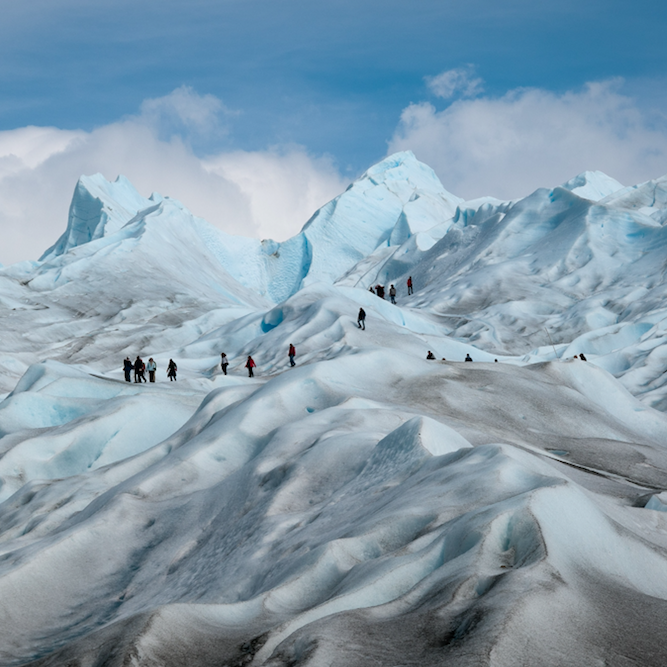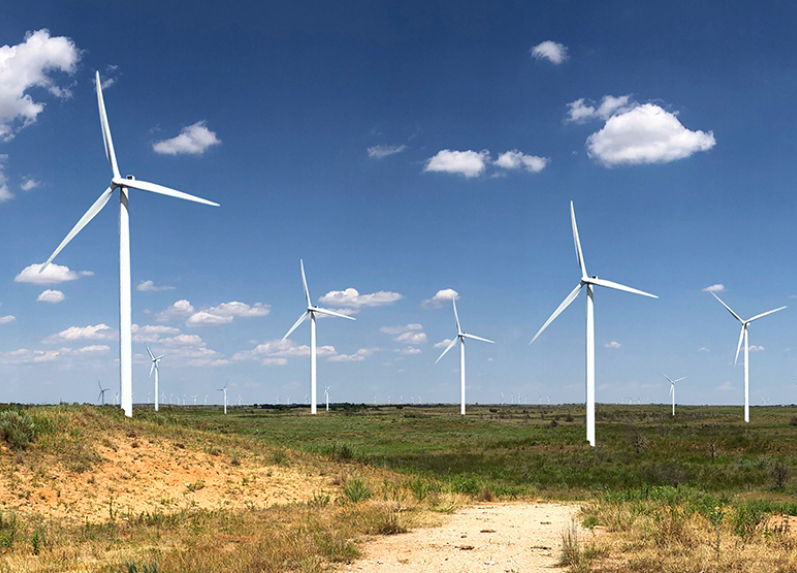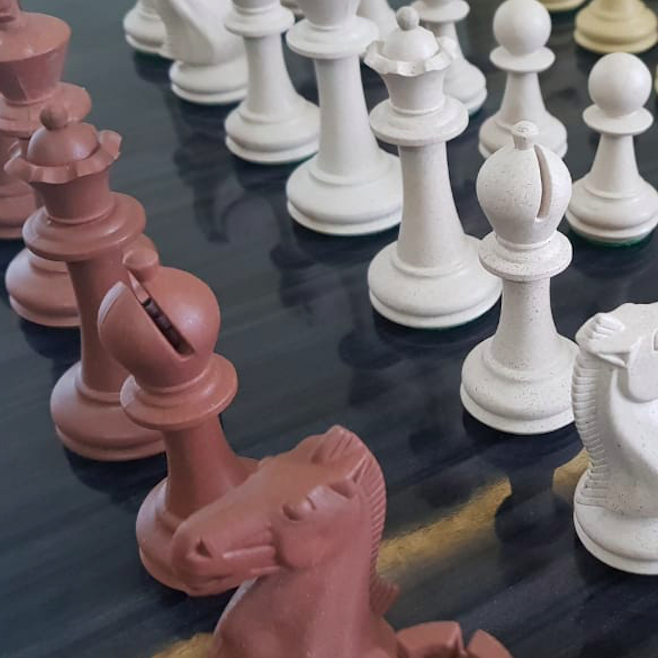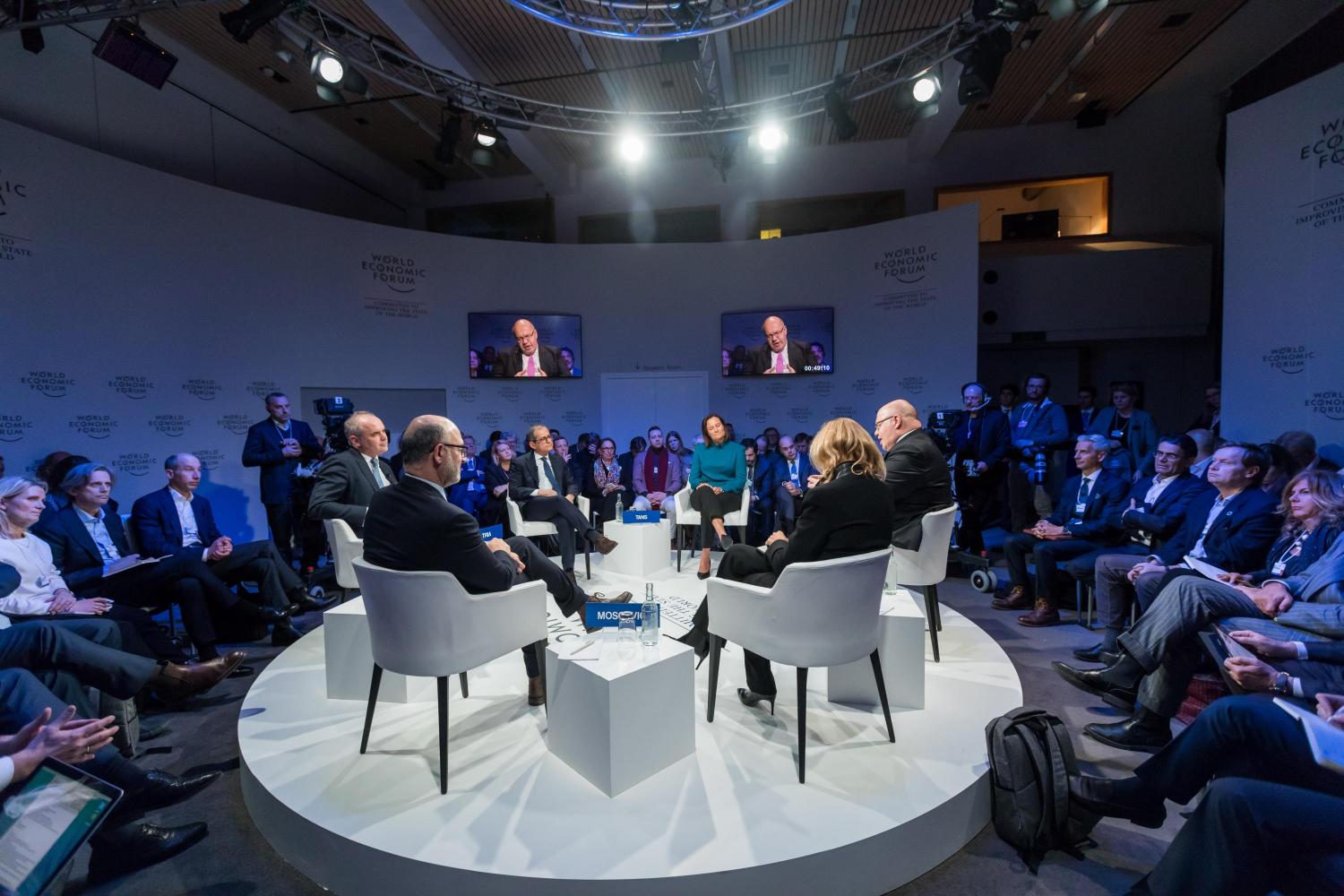UN Global Compact Urges Businesses to Take Fast Action on Ocean Health


According to the UN Global Compact, all elements of society must work together for the continued survival of our oceans - especially the private sector.
Governments, non-profits and individuals can do a lot of good for ocean health. But what about companies? According to the United Nations Global Compact (UNGC), all elements of society must work together to assure the continued survival of our oceans, and that includes corporate action.
To help facilitate healthy business activity in oceans, the Global Compact published a list of nine “Sustainable Ocean Principles” last month. The group, which calls itself the “world’s largest corporate sustainability initiative,” aims to collect letters from companies who say they are committed to renewing the world’s oceans. Companies can download the pre-written letter, sign and send it in, thus resolving to abide by the guidelines and recommendations and to communicate yearly progress.
“[As] we approach the decade of delivery for the Global Goals, much more work must be done, and we need your company to join the movement,” the U.N. group writes its introduction to the new initiative. These Sustainable Ocean Principles come just under a year before the 2020 U.N. Ocean Conference in Portugal. The previous (and first) U.N. Ocean Conference was held in 2017.
Comprehensive ocean principles for responsible business
The three categories under which the nine new principles fall are ocean health and productivity; governance and engagement; and finally, data and transparency.
These guidelines were created with the idea of building upon the Ten Principles of the U.N. Global Compact, which consider human rights, labor, environment and anti-corruption. The new ocean principles were created alongside stakeholders from U.N. agencies, NGOs, academic institutions and private sector companies.
The principles take businesses through a cohesive process for achieving ocean sustainability, no matter the industry. The first, for example recommends that companies, “Assess the short- and long-term impact of their activities on ocean health and incorporate such impacts into their strategy and policies.”
The Sustainable Ocean Principles continue through specific actions companies should take to maintain and restore ocean health, prevent pollution and greenhouse gas emissions and preserve marine life; but they also continue through responsible engagement with local communities and sharing data and practices where appropriate.
This initiative follows the publishing of “Global Goals, Ocean Opportunities” earlier this summer, which outlines the necessity for ocean action, as well as economically-motivated reasoning for keeping the oceans healthy and productive.
The business case for ocean health
“The rapid deterioration of ocean health, which deeply affects biodiversity, coastal communities and the health of the planet, must be urgently addressed,” Lise Kingo, CEO and Executive Director of the Global Compact, says in a press release.
“The deterioration is caused by human activity, and we need to create a tipping point where a critical mass of businesses use their capacity and competence to solve this challenge.”
The report discusses industries such as shipping, recreational cruises, aquaculture and offshore energy production.
One business case the report offers for marine food production is that more sustainable production practices, such as responsible aquaculture, can improve yields and reduce pressures on marine and land ecosystems. The report includes a graphic that shows aquaculture increasingly overtaking production from capture fishing, especially over the last three decades.
Also recommended is integrated farming, which can mitigate ocean acidification and improve carbon sequestration, but also directly benefit the farm by creating a more balanced ecosystem that more effectively uses byproducts and organic waste.
The report also discusses improving the traceability of fish feed — which represents half of the industry’s procurement costs. Better data can improve business operations and build trust among customers.
Responsible aquaculture can also help restore fish populations — 50 percent of which are fully exploited. In the case of ocean food production, the business case for sustainability is continued survival of the industry. With continued warming oceans, acidification and pollution, the same can be said for all industries that rely on oceans, though not always as directly.
Anticipation builds for the 2020 U.N. Ocean Conference
When some national governments are shifting from stewarding the ocean to protecting opposing business interests that pollute, exploit resources and ignore indigenous populations, individual corporate action is essential.
The theme of the 2020 U.N. Ocean Conference will be “Scaling up Ocean Action Based on Science and Innovation for the Implementation of Goal 14: Stocktaking, Partnership and Solutions.”
There’s no doubt that corralling businesses for coordinated and deliberate action on behalf of oceans will prove a positive precursor to a meeting that will focus on partnerships, progress and solutions.
If your business touches the ocean in any way, even in energy or shipping, sign onto the Sustainable Ocean Principles. If nothing else, the increasingly environmentally conscious average consumer will reward you for it.
Image credit: Pexels
A Natural Progression: From ‘Sustainability Reporting’ To ESG


Not too long ago, companies that aimed to establish a leadership role in corporate sustainability reporting were mainly focused on environmental issues. More recently, the meaning of sustainability has broadened into ESG: Environmental, social, and governance reporting. This integrated approach can be challenging, but for some companies it is the inevitable result of their efforts in the environmental field, as illustrated by the leading fertilizer firm The Mosaic Company.
Environmental sustainability as a starting point
In its simplest terms, a fertilizer company’s relationship with its customers is purely transactional: The company supplies the nutrients, and farmers grow the food.
For Mosaic, though, the relationship extends far beyond the initial exchange.
“Mosaic is a fertilizer company, so we have long viewed sustainability as an essential piece of our business and an imperative for ourselves and our stakeholders,” explains Natali Archibee, sustainability manager at Mosaic.
In other words, environmental sustainability is just one part of a holistic community web that is affected by Mosaic’s core business. The global ESG movement has provided the company with an opportunity to draw more corporate resources into its sustainability efforts.
“Our emphasis had been on sustainability, meaning that the targets and performance improvements had been on environment,” Archibee says. “Now the expectations are shifting, and this approach is more representative of our business.”
From subsistence to surplus
The fertilizer sector is characterized by energy and water intensity, but these challenges also provide opportunities.
For example, Mosaic promotes the science-based “4R Nutrient Stewardship” best practices model for fertilizer application, enabling farmers to increase yields while reducing environmental impacts.
As practiced by Mosaic, the 4R program also supports no-till farming, the use of cover crops, and other conservation strategies that support local communities. Through improving farmer profitability, the impacts of 4R can ripple out to impact the economic, environmental and social health of the entire community.
Those impacts come into clear focus when applied to subsistence farming, notes Archibee. She cites the company’s “boots-on-the-ground” approach as a factor in the ability of local communities to move from bare subsistence to surplus.
“It is really important to share best practices, and 4R is a great example of efforts extend beyond the four walls of a company, and reach into value chain,” she explains.
ESG as a natural outcome
In the context of the 4R program, the transition from environmental reporting to ESG comes into sharp focus. Mosaic has positioned the 4R program as the vehicle for sustaining the use of fertilizer through an equal measure of economic, environmental and social benefits.
The company’s Villages program in India illustrates how that framework can involve the community holistically, beyond the fields.
The Villages program focuses on food security for smallholder farmers, whose yields are often far below that of large producers.
Mosaic launched the Villages project in 2008, in partnership with its nonprofit foundation and India’s sustainable development nonprofit organization, the Sehgal Foundation.
The project provides equipment and guidance for farmers to practice Krishi Jyoti, which translates into “enlightened agriculture.” In practice, that means an integrated approach to agriculture, water conservation and education.
Since launching in 2008 the program has grown from two villages to 60, encompassing 40,000 people and more than 16,000 acres of crops.
So far, the project has increased yields among participating farmers by 20 to 30 percent, while helping to restore local water tables and provide a healthier environment for children’s education.
A web of community relationships
Another stepping-stone to ESG occurred in 2013, when Mosaic entered into a partnership with the U.S. wildlife conservation organization Ducks Unlimited and the trade group USA Rice.
The so-named Rice Stewardship Partnership extends the focus of the 4R program to emphasize wildlife habitat as well as energy efficiency, water conservation and nutrient management.
The partnership, which also involves significant input from the U.S. Department of Agriculture, involves ensuring that rice fields provide wintertime habitat for waterfowl and other wildlife after the growing season. Dry conditions and declining aquifers have made it imperative for rice farmers to adopt new water conservation measures, so all stakeholders benefit through the partnership.
In just six years, the partnership has engaged more 13 percent of all the rice acreage in the U.S.
Of the 390,000 acres managed within the program, 27,000 acres are also practicing a new water conservation approach that saves water and improves water quality while also reducing greenhouse gas emissions.
Maximizing the good
With the transition to ESG reporting, Mosaic can apply its experience in community well-being to employee wellness and other areas. It can also zero in on areas of challenge, including energy and water intensity.
“It’s not only about investments. It’s also about impacts where we have operations,” Archibee explains. “A company like Mosaic has the responsibility to make a positive impact. The ESG model allows us to understand and minimize those impacts and maximize the good. It all comes back to mission of helping the world grow the food it needs.”
The lesson for other companies is clear: the world of commerce is transitioning to a more holistic model - and adopting an integrated approach to sustainability is the key to long term growth.
Environmental reporting is a good start, but it is just one step in a journey that is more complex and challenging, but also more rewarding – for a company’s employees and external stakeholders alike.
Don’t forget: Later this month, we’ll be hosting 3BL Forum: Brands Taking Stands – What's Next, October 29-30, at MGM National Harbor, just outside Washington, D.C. Natali Archibee of Mosaic will join an onstage discussion exploring how ESG must integrate all departments of a company, including investor relations, human resources and communications.
We're pleased to offer 3p readers a 25 percent discount on attending the Forum. Please register by going to the 3BL Forum website and use this discount code when prompted: NEWS2019BRANDS.
Image credit: Tobias Greitzke/Unsplash
Women Who Code, Silicon Valley Giants Invest in Software Training for Latin American Women


While Silicon Valley often comes to mind when you think of software development, there is a growing hub of tech activity in Latin America as major players such as Google, IBM, Microsoft and Amazon expand operations in the region.
According to the Inter-American Development Bank, software development will be the fastest-growing career in Latin America over the coming years, with 1.2 million professionals needed by 2025. However, like Silicon Valley, the tech sector in Latin America is highly dominated by men, with women making up less than 10 percent of software developers.
This startling statistic is a problem – not only for gender equality in the region but for the future growth of the tech sector there whose success relies on finding highly skilled workers. According to the OECD, Latin America has the world’s widest gap between the available pool of skills and those demanded by firms.
Expanding the pool of female coders
With backing from Google, Microsoft and other tech giants, Women Who Code (WWCode) has grown from a small group of women engineers in 2011, to become one of the world’s largest and most active nonprofits dedicated to helping women excel in technology. Today it has networks in 60 cities across 20 countries, including more than a half dozen in Latin America.
Recently it launched its most recent network in Costa Rica with funding from California-based software firm VMware.
“When we are able to bring a network to a new city like San Jose, it makes such a difference in the lives of the engineers living there,” said Alaina Percival, said WWCode CEO in a press release issued at the network’s launch. “It is a place where the talented engineers in the local community can gather together, and support one another, while also benefiting from valuable technical learnings that will enhance their career.”
The network will host technical, career, educational and networking events for its members and join with other WWCode networks to offer scholarship opportunities to members.
Investing in human capital to battle inequality
“In Latin America there are millions of women with the potential of becoming the digital leaders of tomorrow,” said Mariana Costa Checa, co-founder and CEO of Laboratoria, which, like WWCode, also helps women in Latin America develop careers in tech.
Laboratoria, which has a presence in Chile, Brazil, Peru and Mexico, offers a six-month bootcamp starting with basic tech skills and finishing with specialized training in front-end development and UX design. Participants learn JavaScript, HTML and CSS. In the past three years, more than 1,300 women have graduated, with more than 80 percent of them getting jobs in technology with salaries, on average, three times what they were earning before. According to its website, more than 400 companies have hired Laboratoria graduates since it opened its doors in 2014.
Any woman can apply to Laboratoria. Through a series of questions and interviews, it identifies those who could benefit and have the potential for a career in technology. To date, more than 7,500 women have applied.
“Prioritizing the right type of investments in human capital is the only way forward for the region,” wrote Costa in Fortune last month. “If the public and private sectors address this talent gap in a way that ensures less privileged groups can benefit equally, a more inclusive future would be within reach.
“Imagine a Latin America where women, ethnic minorities, and underserved youth are part of designing the products and services we use daily. In the most unequal region in the world, bringing their skills and views in to shape the digital economy is a chance to start building societies that can respond to the needs of all.”
Image credit: Women Who Code
Investing in Entrepreneurs to Help Solve Our Climate Crisis


When The Guardian updated its style guide earlier this year, committing to stop using the term “climate change” and instead, call it what it really is – a climate emergency – it was an honest admission highlighting the reality of the dire landscape we’re facing today. In the words the remarkable global climate youth leader, 16-year-old Greta Thunberg, “we can’t solve a crisis without treating it as a crisis.”
Increasingly, political leaders and executives across sectors are more forcefully acknowledging that the clock is ticking to address this growing emergency. We have a short window of time – a decade – to rapidly reduce greenhouse gas emissions in line with science. As a result, we are seeing growing numbers of companies engage in bold climate actions. For instance, we see it from Anheuser-Busch InBev, a member of our RE100 initiative for companies committed to sourcing 100% renewable electricity and helping to shift market demand in favor of clean alternatives; from PepsiCo, which just days ago announced their plan to reduce their plastic use by 35 percent in the beverages portfolio; and Seventh Generation, which donated airtime to cover the Global Climate Strike on September 20th, in addition to cutting their own greenhouse gas emissions internally.
While big business is taking steps towards a more sustainable future, this in itself simply isn’t enough. Facing one of the largest environmental crises our planet has ever endured, we are in need of more voices, more tools, and more new solutions to help save the place we all call home. We need big, bold ideas and we need to invest in the people that are going to turn these ideas into reality now. But with a seemingly insurmountable crisis, where can we start? One key group that comes to mind when I think of the voices we need most are entrepreneurs.
Innovators and startups from around the world are using emerging technologies like AI and machine learning to develop innovative solutions that can save the planet, focusing on everything from emissions-free transportation to lower-footprint construction. From new heating and cooling tech to closed loop food systems, the list goes on. Unfettered by corporate red tape, the ability to launch new products quickly is infinite, and there is a new era of leaders and thinkers in every corner of the world who are moved to solve the multitude of climate-related issues.
Unfortunately, a great idea cannot survive on its own. Access to capital, industry experts, policy makers, and a human-centric design approach are paramount to transform a good idea into a successful company and a sustainable solution. That’s why programs like URBAN-X, the MINI-backed accelerator for startups reimagining city life, are crucial in the fight against climate change. By investing in the most promising entrepreneurs who are driven to confront the climate crisis, URBAN-X and similar entities around the world are shepherding in a new generation of leaders solving for emerging and unprecedented challenges.
What once could be seen as a niche industry -- the intersection of technology and cities -- has fortunately become a booming sector now dubbed “urban tech.” Between 2016 and 2018, investment in urban tech totaled more than $75 billion, equaling approximately 17 percent of all global venture-capital investment. While only a small fraction of the total investment we need to prevent catastrophe, this investment is promising for our cities and our climate as it means more creative thinkers developing bolder solutions faster, with new approaches to make our cities healthier, more sustainable, and more equitable to live.
Image credit: Markus Spiske/Unsplash
Data-Driven Decisions Can Help Slash Food Waste


Since 2007, Elytus—a waste management and environmental services company based in Columbus, Ohio—has helped restaurants, groceries, and other companies manage their food waste streams. Its clients include Red Robin, CineMark Theatres and Bob Evans Restaurants.
Although Elytus started as a company to manage waste logistics, consumer demand drove its clients to change their business-as-usual practices, and in turn, the company has emerged as a trusted advisor as it consults with more companies on finding ways to make their operations run far more efficiently and sustainably.
From hauling waste to sustainability advisor
“We started off as managing waste haulers’ logistics, but then consumers started to ask questions about how much was being thrown away, so we became subject matter experts of what is wasted and why,” Matthew Hollis, Elytus’ founder and president, told TriplePundit.
Now, Elytus embodies the motto “waste nothing” across its projects with different companies. The company has grown to 45 employees, servicing 50 nationwide clients, and has saved companies more than $11 million through waste audits, sustainability planning and ROI assessments, according to its website.
“It is about really sitting down and showing, 'Here are the cost of the investments you need to make.' Then answering, 'What is the cost benefit, and how long is it going to take?'” Hollis said. “When a payback makes sense, [the clients] go for it."
During the interview, Hollis touched on how his clients are moving into data-driven decisions to cut food waste, which is an important step since it is estimated that full-service restaurants and limited-service restaurants waste $25.1 billion worth of food annually in the U.S.
Empowering data-driven decisions to cut waste
The most crucial step is for restaurants to benchmark their amount of food waste to understand how much money is being thrown away. Hollis explained that it is easier for restaurant owners to buy into the operational costs and impacts of waste reduction technology because the restaurant industry is capital intensive.
New technologies that enable the restaurant team to collect data about their waste include those offered by LeanPath and Winnow Solutions. Not only do these technologies help restaurants reduce their costs, but they also improve restaurant chains’ reputation as 72 percent of U.S. diners care about how restaurants handle waste, according to a Unilever study.
“I think technology has the ability to create connectivity between resource spaces, and to take one person’s waste to make it another persons’ feedstock,” Andrew Shakman, CEO and founder of Leanpath, recently told GreenBiz. “We see that as a big opportunity.”
When it comes to waste, both technology and knowledge are power
Another methodology to benchmark waste creation is made possible by sensor technology. Sensors in coolers and refrigerators can help companies monitor their products’ perishability and alert employees. Zest Labs is one company utilizing the Internet of Things to curb waste along the supply chain, including restaurants’ back-of-house operations.
By understanding how much food and plastic waste is being created, Elytus’ clients are better able to prevent waste during operations and procurement to make a dent in their waste production and curb operational costs by making decisions such as eliminating the use of single-use plastic containers.
“In the end, I am a firm believer that the largest impact that you can have your waste stream is by preventing it in the first place,” Hollis said.
Image credit: Pixabay
A Call to Action for Corporate America: Change Disaster Response from Relief to Resiliency


By Danielle Holly, CEO, Common Impact
When Walmart announces that it will stop selling handguns in response to the increasing incidence of mass shootings, the result is a major shift in thinking about gun laws throughout the U.S. When AirBNB provides free housing to the refugees of Hurricane Dorian, companies start to think of new, creative ways they can use their assets and core business practices to make our communities safer and more resilient.
In these times of increasing national disasters, natural and man-made (the border crisis, mass shootings, water pollution), it is incumbent on the private sector to facilitate change before tragedy strikes, not as an afterthought to mitigate illness and death.
Corporations can do this by changing their current reactive approach to disaster response by deploying their workforces in advance of tragedy through skills-based volunteering. Also known as pro bono consulting, skills-based volunteerism engages business experts to support community-based nonprofits in creating risk contingency plans, business continuity programs and disaster communications protocols - all in advance of catastrophe. This preparation enables nonprofits to better respond to the acute needs brought on by crisis and supports communities in preparing for and recovering from the next disaster.
Research indicates the public is looking to the private sector for such support and employees, young and older, increasingly want to work for good corporate citizens. Corporate social responsibility (CSR) is not only good for business, but it is good for our communities.
Recently, TOMS, the company known for donating a pair of shoes for each one sold, took on the gun control debate by launching its own campaign against gun violence, spurred by founder Blake Mycoskie's personal reaction to the 2018 mass shooting in Thousand Oaks, California.
Other companies have lent their strategic, marketing and project management expertise in such areas as supply chain, finance, human resources and communications when natural disasters like forest fires, hurricanes and tornadoes strike.
The key, believes Amy Smith, Chief Giving Officer at TOMS, is not being reactive but being proactive:
"At TOMS, we knew the world around us was changing, and we had already been asking ourselves 'Where else are we going to be putting our energy and focusing our impact?' When the Thousand Oaks shooting happened, it just felt like the right thing to do on every level. Blake was driving into work and his wife called him and said, "There's been a shooting. It's in our backyard. I'm not taking the kids to school today. Somebody has to do something." And he thought, "Well, if not us, who? If not now, when?"
Some ways that companies can help communities prepare for the next crisis include developing a supply management program or for communities hit by climate incidents or drafting a communications plan and creating funding streams as part of a pre-disaster plan for non-profits and municipalities.
"Private sector companies are also affected. They have people and teams on the ground during a disaster and are looking out for those people and trying to make sure their teams are safe. And so they've already done a lot of really good thinking and work around how to best respond to a disaster," said Erica Tavares, Senior Director, Institutional Advancement at International Medical Corps. "The NGO community has a lot to learn from all of the expertise, learning, and work that private sector companies have already done around the whole continuum of disaster response."
My organization, Common Impact, whose mission is to match corporate entities with nonprofits for skills-based volunteering, has just released a set of tools available to help communities and organizations as they plan for the inevitable. These tools were designed to help companies rethink their current approach to disaster response in order to develop a more strategic and proactive solution for our communities and include:
1) A Measurement Framework for companies to quantify how a focus on community resiliency will produce social and business benefit for nonprofit partners, overall community health, consumers, employees, and shareholders.
2) This Pro Bono Project Portfolio for initiatives that build the resiliency of community partners by leveraging common corporate skills and expertise.
3) A Resiliency Assessment to identify gaps in an organization's ability to respond to disaster and provides insight into beneficial pro bono projects.
We also recently published a report, Insights & Impact 2019: Disaster Response, from Relief to Resiliency, that is available to all organizations and includes access to these tools as well as extensive research on why investment in disaster preparedness can yield strong results for our communities.
A report by the Conrad N. Hilton Foundation finds that 70 percent of giving occurs within the first two months of a disaster's occurrence. The Center for Disaster Philanthropy reports that only 1 percent of corporate sector giving goes toward preparedness and .8 percent towards resilience, risk reduction and mitigation combined.
The current business environment and our research confirm that the business community must broaden its response to disasters from one of reactive donations to support immediate relief efforts to include a more proactive and sustained approach that allows community nonprofits to build resiliency through pro bono support in business continuity planning, risk mitigation and contingency planning. Companies must engage their most strategic asset - their people - in building stronger communities, seizing the power of skills-based volunteerism as a critical investment in community resiliency. We hope the next year sees a vast improvement to match the unfortunate rise in the need to respond to tragedy.
Image credit: Pixabay
Is Progress in Sustainability Reporting Too Glacial for the Glaciers?


In all the developments and challenges presented at the UN Climate Summit last week, the most important debates were not about how we can improve, but how we can systemize the change.
It is redundant to think where we sit in the league table, when what needs to change are the rules of the game for everyone.
It’s why the use of the ratchet mechanism from the Paris agreement and the imperative to address the context approach in all our sustainability actions are both right, but must see the actions under the Climate Change Treaty themselves put in the context of wider societal, economic and cultural norms.
Most obvious of all has been the progress made towards the Task Force for Climate-related Financial Disclosure (TCFD) recommendations, to link climate risk to the world’s financial systems and decision-making.
But although the number of companies explicitly committing to the recommendations is now approaching 1,000, the Task Force’s Status Report earlier this year made clear the priority is for acceleration.
For me, this should not simply be in addressing the lag in how far each of the disclosures is being effectively made amongst those companies already reporting, but in the forces that can trigger interest from the vast majority of companies who are not.
That’s the significance in the progress report published in New York last week, on how the TCFD recommendations can be mainstreamed in the continuing process towards alignment of the major financial and non-financial corporate reporting frameworks and standard-setters.
Coming together to form the Corporate Reporting Dialogue (CRD), these include CDP, the Climate Disclosure Standards Board, the Global Reporting Initiative, the International Integrated Reporting Council and the Sustainability Accounting Standards Board.
If each of the sustainability frameworks represented in the CRD aligns to the recommendations in full, overnight it would increase TCFD reporting worldwide by ten-fold.
This is being driven forward in the CRD Better Alignment Project, which I was proud to help establish in my years at the International Integrated Reporting Council, and where I am gratified to see its concrete results being brought in to the public domain.
Last week’s first year progress report describes how the project started with technical mapping of the principles, disclosures and metrics in the TCFD recommendations, against the requirements of what are indeed the major comprehensive frameworks being used by companies to report today.
An important finding is that each one of the principles recommended are themselves comprehensively covered by the existing frameworks, making it much easier for companies to advance TCFD reporting, without having to fundamentally change the way they organize their reporting practices.
The project has involved continuous stakeholder involvement, to test market-readiness for its conclusions. Most encouraging of all, consultation results published last June show clear demand from business itself for progress towards the intended aim of alignment. Current frameworks and standards were viewed by many as a “temporary fix” to problems that require a more comprehensive solution, the project reported.
For our partners who believe in the ultimate goal of integrated reporting, it provides reason for optimism that we can avoid climate risk becoming only the latest of a long series of disclosure demands and initiatives in well-meaning but ultimately limited, fragmented and disconnected approaches.
The mapping exercise on metrics undertaken by technical specialists from each of the frameworks in the first year of the project, also yielded high levels of cooperation and demonstrated already strong alignment.
It did reveal that for 15 of the TCFD’s 50 illustrative example metrics, limited differences persist amongst the frameworks involved. This particularly concerns sector-specific indicators for financial services and real estate.
There has always been a tension in developing business reporting between achieving comparability across different types of companies, and developing sector-specific information, more relevant and material to the business.
But for the wider business community, as well as for the project, the bigger question remains whether the progress towards alignment being made is fast enough to constitute meaningful progress towards the system change required?
Last week’s report commits the Project to a second year which would see the drawing up of a detailed taxonomy; the creation of an interactive, online tool aimed at guiding users through how the different frameworks interact; and to the setting up of a collaborative technical forum between the participants.
However, it draws back from committing to alignment work beyond climate issues and comments that “the Better Alignment Project may not be able to resolve this issue in its present form.”
At the IIRC Council in Frankfurt in April, we initiated a ‘live’ debate as to whether ‘convergence’ amongst existing reporting frameworks and standard-setters could proceed quickly enough or whether new institutional approaches are required, given the scale and the speed of action required?
It is equally gratifying to me that Central Banks, Stock Exchanges and Securities Commissions each have current initiatives to pursue sustainability, using a combination of market and regulatory mechanisms.
Work to update the Management Commentary Practice Statement in the International Accounting Standards Board (IASB), also has the potential to be an important step towards integration.
Perhaps most ambitious of all is the taxonomy on sustainability being developed by the European Commission, which some have suggested may become a de facto global standard for sustainable business reporting.
Within the Corporate Reporting Dialogue, my old friend and colleague, International Accounting Standards Board Chair Hans Hoogervorst, has suggested that convergence will not come quickly enough, and it is indeed time for consolidation.
I hope and believe that the partners in the Corporate Reporting Dialogue may be able to genuinely mainstream climate reporting through an evolutionary approach.
But after a week when the impact on the world’s glaciers was oft-quoted, they have to convince business, regulators and stakeholders, that the progress is not itself so glacial, as to fail to serve its over-riding purpose.
Honda Announces Major Investments in Renewables, Sets the Bar for Others to Follow


Last week, Honda Motor Co. announced a major renewable power deal for its manufacturing plants in Ohio, Indiana and Alabama. The automaker said it would acquire the power from wind and solar farms in Oklahoma and Texas, and aim to increase its renewable energy consumption from 21 percent of its current portfolio to 80 percent by the end of 2021, making this the largest renewable energy purchase in the auto industry.
The purchase agreement will be arranged with a “collar structure,” a financial strategy that guarantees a floor price for the buyer and ceiling price for the seller, thus significantly reducing risk. This deal is important for three reasons: transportation emissions, water impacts and corporate leadership.
Transportation is largest contributor to greenhouse gas emissions in the U.S.
In 2017, transportation overtook power generation as the largest contributor to climate-warming greenhouse gas emissions in the U.S. (29 percent and 28 percent, respectively). These past few years have seen a rash of policy and technology solutions as a result. California passed the country’s strictest vehicle emissions standards, with several states following suit. While those regulations are currently under threat of rollback from Washington, it seems difficult to imagine that the long-term trajectory will continue toward relaxing regulations that limit pollution and emissions.
In addition to regulations such as these, the hybrid and electric vehicle (EV) segment of the auto industry has surged in recent years. With the price of EVs dropping, the thirst for these new cars continues to grow. While there has been some infrastructure installed in key regions, to really reach a tipping point, significant investments are still needed nationwide.
Large renewable energy projects can be good for water
Wind and solar photovoltaic (PV) energy sources use negligible amounts of water. Coal- and gas-fired power plants are incredibly thirsty resources. In a changing climate, with many parts of the country seeing more water stress, increasing the use of these low-water energy sources will be critical.
The Honda agreement is a little complicated, so let’s break it down. Honda will purchase renewable energy to offset electricity it will buy from the grid in the three states where its manufacturing plants are located. All three states generate or consume the bulk of their electricity from coal and natural gas. Alabama and Ohio also have nuclear power, which generates no emissions but consumes vast amounts of water. While neither of these states are in the crosshairs of water scarcity like some others, they have suffered an increasing number of droughts over the past decade.
In turn, the wind and solar power outlined in the agreement will be purchased from Oklahoma and Texas, respectively. Both states are squarely in the water scarcity bucket. Details about the solar power purchases will be revealed next year, and depending on the type of facility, it could be a high- (concentrating solar) or low-water (PV) facility. The point is, because of the impacts of climate change on water, and the variable nature of those impacts depending on location within the country, every energy investment decision should consider water in its calculus. It is no longer possible to think about energy in isolation from water.
Corporate leadership in climate change action matters
There is no silver bullet to solving climate change. It will take smart policy, technological innovation, behavioral changes and corporate leadership. When major companies like Honda make significant investments in clean energy, whether from an economic or environmental standpoint, it not only sends a clear message, but it sets the bar for other companies who compete in the same space to meet it. Consumers are more cognizant of the environmental and social actions of the businesses where they spend money.
Further, with this decision, Honda is making a statement in states like Alabama, which sits in a region that will bear the brunt of climate change impacts and is arguably not adequately preparing for that scenario. As a nation, we are a driving culture. With a changing climate, it is good business for automakers to invest in clean power and clean technology, as their leadership is one key to solving the challenges brought on by climate change.
Image credit: Honda
Scrappy Alternative Materials Startup Seeks a Pivot in the Plastics Sector


Above: chess pieces derived from bamboo-based plastics, made by Michigan-based Pivot Materials.
Tell Kylee Guenther, who founded the sustainable plastics startup Pivot Materials, that she can’t do something, and you’ll only harden her resolve—which is not a bad trait for an entrepreneur.
Told when she was young that it didn’t matter if she was good at math because she was “just a girl,” she channeled her fury into working harder. Years later, testing her idea for Pivot at a pitch competition, she was told once again she was wasting her time, and that her product was impossible to make. She held up the prototype in her hands and told the skeptics, “I know we can do this.”
Once told she was "just a girl," she's not only good at math, but also with developing bamboo-based plastics
Today this millennial entrepreneur now owns her own Detroit-based company, which manufactures advanced materials from bamboo and other natural materials that can be used in place of fossil fuel-based plastics. Pivot says it counts four of the Forbes 100 largest companies among their customers. “For a scrappy startup like ours, that’s a huge big deal,” she told TriplePundit.
Guenther is an admittedly “trash-obsessed” person. “I’m kind of just fascinated and saddened by trash. I want to understand why we have it and where it goes,” she says. That fascination started when she was little.
“I was always interested in environmental issues even before I knew what an environmental issue was,” Guenther said. “I wanted to be vegetarian as little girl and I was always interested in recycling.” With no recycling facilities in the rural town outside of Detroit where she grew up, she’d have her parents drive her to one after she’d amassed a collection of cans.
Plastics was also a topic around the dinner table. Guenther is the second generation in her family to work in the plastics industry, as her father was among the early designers of plastic packaging materials like one-gallon milk jugs. “So, I grew up basically on the shop floor and I learned about plastics from the bottom up,” she said. “And I saw all the amazing things daddy could do with plastic but at same time I was mortified by all the mess it created. I wanted to get into the industry and do something more in touch with my feelings about sustainability.”
Turning to nature for durable plastics
Joining up with Pivot Co-Founder and Engineering Manager Raju Patil, who had done research focused on bamboo, Guenther says they knew they had found the material to launch their business. “Bamboo is engineered by nature to grow strong and straight and has amazing mechanical properties,” she said. The world’s fastest-growing plant and a champion carbon sequester, bamboo met Pivot’s requirements as a highly sustainable material. Then Pivot developed its own proprietary process for turning it into a biomaterial without using the harsh chemicals often used by other manufacturers that use bamboo to produce fabrics and other materials.
“I’m a firm believer that everything we need on earth is already here without creating a lot of synthetics and that’s the goal with Pivot,” Guenther added. “We want to pivot the plastics industry and reduce as much as possible the use of plastics and create something that is more sustainable and at the same time keep up with our modern lifestyles.”
Plastics are at a Pivot-able moment
Pivot may be on to something. Forbes has said the materials industry, pervasive but stagnant, is ripe for disruption and Guenther expects it will be one of the hottest fields for start-ups over the next decade. She sees the demand coming primarily from two forces: first, her own generation’s overwhelming support for brands that support causes they care about. Some 73 percent of millennials have been the most willing of any age group to pay for sustainable offerings, according to a 2015 Nielsen poll.
And second, she commends recent government regulation around stemming the use of plastics, especially from Europe, which has declared war on plastic waste as well as Canada, which aims to ban single-use plastic by 2021. “It’s so powerful to see this happen,” she said.
The combination of government support and the growing commitment of companies around the world to find plastics alternatives has customers turning to firms like Pivot. Guenther says the world’s first bamboo fiber reinforced shipping pallet was created with her company’s materials. She was staggered to discover that almost half the trees in the U.S. that are cut down annually are used to make shipping pallets, which in turn are generally used only one to five times before they are discarded. “Ours can be used many, many times,” she noted.
Beyond bamboo
And Pivot expects to make an announcement soon about Pivot’s launch of the world’s first car part made out of a bamboo fiber reinforced composite, which will go into production next year. The company is looking into other natural materials for research and development, too.
For example, rice hulls, a waste product that accumulates after this crop is harvested in countries like India, is often burned – in turn contributing to regional air pollution. Striving to be part of the solution to this waste problem, Pivot has begun buying rice hulls, boosting rural farmers’ income. Those rice hulls are then processed into composite materials that can then “give trash a second life.” Additional ideas percolating around Pivot include the use of coffee processing waste as a potentially new base material.
Guenther is confident that “in five years we will be a force to be reckoned with in the plastics industry. I don’t think ever again in life I will have the chance to do something that has the potential to positively impact every person who lives on the planet.”
Don’t forget: Later this month, we’ll be hosting 3BL Forum: Brands Taking Stands – What's Next, October 29-30, at MGM National Harbor, just outside Washington, D.C. Kylee Guenther will join several exceptional women onstage during the afternoon of the 29th to share her journey toward becoming the CEO of an innovative startup.
We're pleased to offer 3p readers a 25 percent discount on attending the Forum. Please register by going to the 3BL Forum website and use this discount code when prompted: NEWS2019BRANDS.
Image credits: Pivot Materials
CEOs Urged to Step Up or Risk Not Achieving the SDGs


It’s tempting for a corporate sustainability leader to feel discouraged by the key findings from a recent study Accenture released in a joint effort with the UN Global Compact (UNCG).
This assessment comes a few years after a 2016 Accenture-UNCG study concluded that 70 percent of CEOs had believed the UN Sustainable Development Goals (SDGs, or Global Goals) would provide a clear framework to structure sustainability efforts.
But three years later, it turns out only 48 percent of CEOs are implementing sustainability into their operations. That has led the CEOs in this year’s survey to call for renewed action on sustainability.
But seeing the glass half empty would only be half the story reflected in the report, the world’s most comprehensive research to date on the global business community's contribution to the SDGs. The survey captures the views of more than 1,000 top executives across 21 industries and 99 countries. These leaders are not content with the status quo and “are anxious for a course correction,” according to the report.
Gaps between ambition and reality
In fact, 71 percent of CEOs surveyed in 2019 believe that—with increased commitment and action—business can play a critical role in contributing to the SDGs. While encouraging, that’s in contrast to the 90 percent in 2016 who said they were personally committed to ensuring that their companies lead on the sustainable development agenda.
“There is a gap between ambition and reality,” Jessica Long, Accenture’s managing director of strategy and sustainability, told TriplePundit in a recent interview. “Compared to three years ago, we found a lower percentage of CEOs than we’d expect taking action on their commitments.”
For example, in 2016, 49 percent of CEOs said business would be the most important actor in the delivery of the SDGs; in 2019, only 21 percent feel business is currently playing a critical role in contributing to this initiative.
Geopolitical uncertainty clouds outlook
In parsing out this shift in CEO commitment, Accenture found that several factors were clouding the 2030 outlook. Geopolitically, fragmentation and volatility have led to political and economic uncertainty. Socioeconomically, structural trends are driving greater environmental stress and social inequality such as a growing population and rising middle class. Technologically, the world is entering the Fourth Industrial Revolution (4IR), and the pace and scale of digital, biological and physical innovation could accelerate the world’s problems or provide technology breakthroughs to help achieve the SDGs.
“We found that one of the biggest reasons for the gap between ambition and reality is political uncertainty causing companies to pause what they are doing with longer term investments, which typically include sustainability, or reducing these efforts,” Long told 3p. “Beyond that, many CEOs are realizing that while there are many things a company can do within its own scope, many of these challenges require collaboration within their own sectors, across other sectors and together with governments.”
Long noted the number of pre-competitive or non-competitive consortiums that have arisen in recent years to combat sustainability problems that span sectors and industries, like the Alliance to End Plastic Waste, showing that collaboration is gaining in acceptance.
Business case gaining momentum
Long says in the end, she finds the glass more than half full in this year’s study. “I’d be more worried if business leaders were saying that they did not see the business case for sustainability or that investors were not behind sustainability—but that is clearly not the case. Today CEOs are saying, ‘We get why this is important. It’s good for business, are customers are demanding it, our consumers are demanding it, our employees are demanding it. They are feeling the pull and that to me is a watershed moment. It’s not a rogue group of sustainability professionals telling them what to do.”
In fact, only 26 percent of CEOs in 2019 cited “no clear link to business value” as a barrier to sustainability, compared to 31 percent in 2016 and 37 percent in the 2013 CEO study. In addition, 40 percent of CEOs surveyed in 2019 say sustainability is driving revenue growth and 35 percent are realizing value through cost reduction today.
Some 76 percent of CEOs say citizen trust will be critical to business competitiveness in their industry in the next five years, and it’s good they’re paying attention. In the end, Long adds, “It’s the CEO that sets the tone and only the CEO can make some of these longer-term systemic, culture-bending changes within an organization. If you want your company to truly embrace the circular economy, for instance, it’s a massive mindset change.”
Getting back on track
While this most recent Accenture study sends a worrying signal that the private sector contribution to the Global Goals is seriously off track, CEOs don’t see it as completely derailed. They’re asking their peers to:
- Raise ambition and impact: Leaders must drive change in their own organizations, and through the disruption of market systems.
- Change collaboration: Key players must connect in new ways because meaningful transformation is not a solo sport.
- Redefine responsible leadership: Leaders must embrace their role as change agents to champion the sustainability agenda.
“Being at the forefront of solving some of the most intractable problems the world is facing is the morally right choice. And we know what we do today – individually and collectively – will tell the tale about humanity, well into the future,” said study participant Steve Cahillane, Chairman and CEO of Kellogg Company.
Image credit: Evangeline Shaw/Unsplash